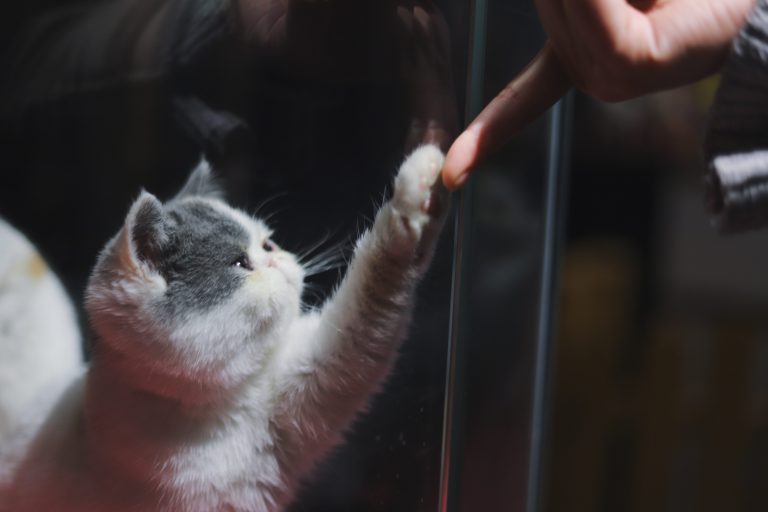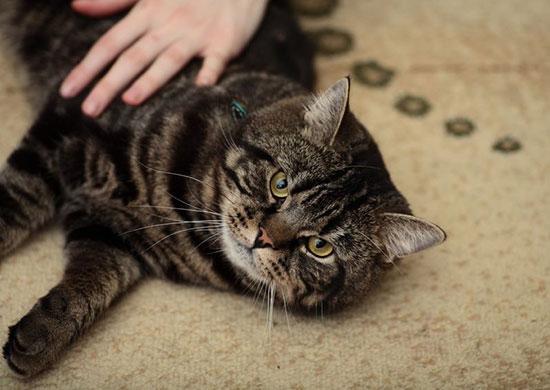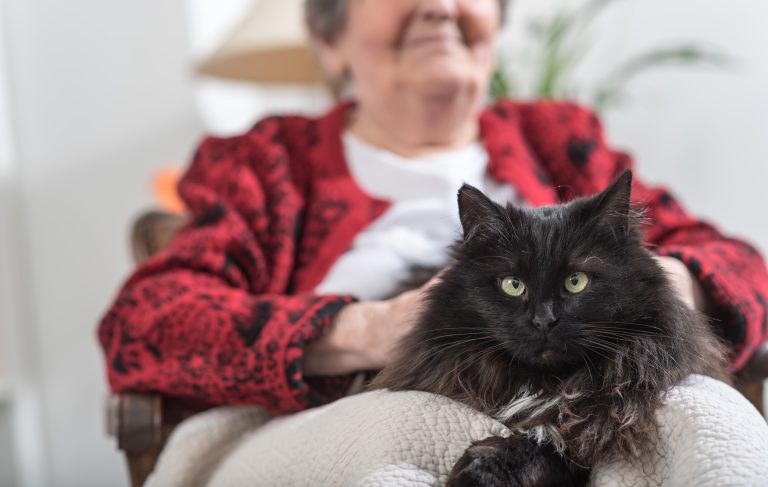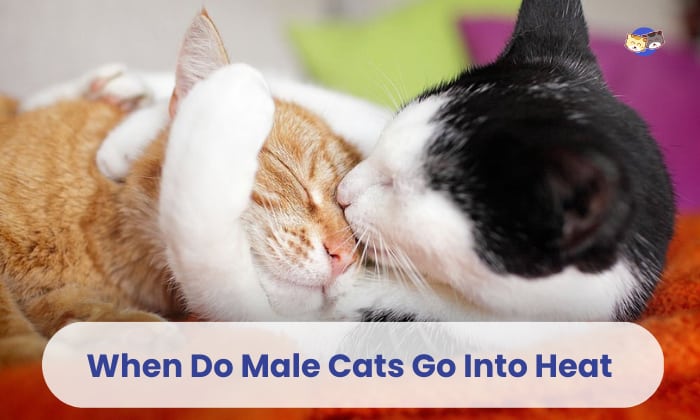Why Are Cats Not As Friendly As Dogs?

Cats are less friendly than dogs due to their independent nature and preference for personal space. Cats tend to be more self-reliant and do not rely on human companionship as much as dogs do.
They have a strong instinct for self-preservation and may not readily trust or seek out human interaction. Unlike dogs, which are pack animals, cats do not have a natural inclination to please their owners or form close social bonds. However, this does not mean that all cats are unfriendly, as individual personalities can vary.
While some cats may be affectionate and sociable, others may require more time and effort to build a bond with their owners. Understanding the unique traits and needs of cats can help foster a more friendly and enjoyable relationship.
The Evolutionary Background Of Cats And Dogs
Different Evolutionary Paths And Domestication Processes
Cats and dogs have been domesticated for thousands of years, but their journeys through evolution and domestication have taken different paths. Understanding these differences sheds light on why cats may not be as friendly as dogs.
Dogs, descended from wolves, have been alongside humans for centuries. They were selectively bred for specific traits, such as loyalty, intelligence, and friendliness. The domestication process led to their ability to form strong bonds with humans and become reliable companions.
In contrast, cats have a more independent ancestry. They are descendants of ancient wildcats that roamed the deserts and savannahs. Unlike dogs, cats were not as actively bred for specific traits by humans. Instead, they underwent a more indirect process of self-domestication.
How These Factors Influence Their Behavior
The different evolutionary paths and domestication processes of cats and dogs have a profound impact on their behavior. This variation can be observed through their interactions with humans and their overall friendliness.
Due to their history of domestication, dogs have become highly social animals. They rely on their human companions and thrive on social interaction. Their genetic predisposition towards friendliness makes them eager to please their owners and form strong bonds. Dogs are known for their expressive behaviors, wagging tails, and craving attention and physical touch.
On the other hand, cats, with their more independent nature, are less reliant on human interaction. Their self-domestication process allowed them to adapt to a semi-dependent lifestyle, often living in close proximity to humans without fully relying on them. Cats are more solitary creatures by nature, and their behavior reflects this independence.
Cat behavior is influenced by their instincts for survival, which include being cautious and self-protective. While cats can form strong bonds with their human owners, they tend to display affection on their own terms. Their friendly behavior may be more subtle, such as rubbing against legs or purring, and they may prefer socializing on their own schedule.
It is essential to remember that individual cats and dogs have their own unique personalities and temperaments, influenced not only by their genetics but also by their upbringing and environment. While cats may not have the same level of friendliness as dogs on a general basis, many cats still form strong bonds with their owners and can be just as loving and affectionate.
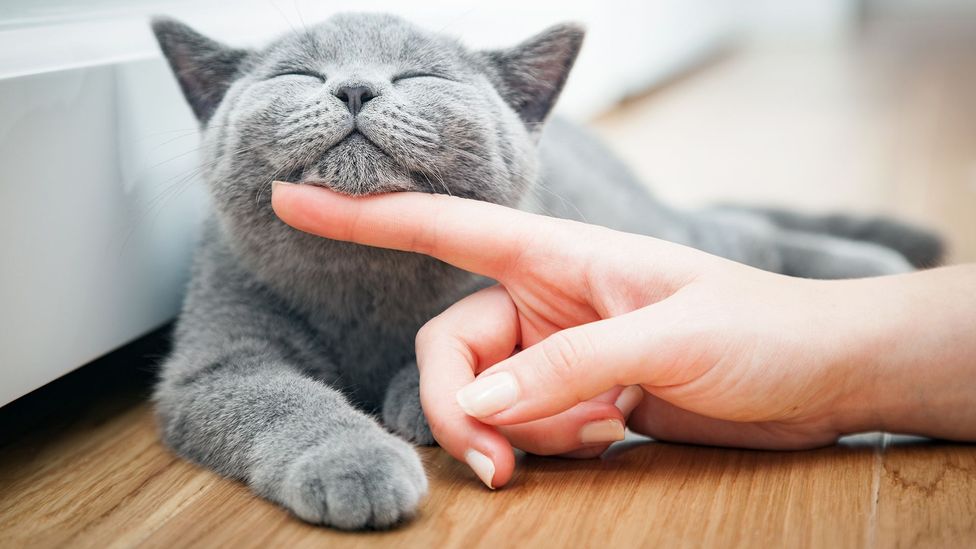
Credit: www.bbc.com
Instinctual Differences In Friendliness
Understanding the instinctual differences between cats and dogs is crucial in unraveling the reasons why cats are not as friendly as dogs. While dogs have a natural inclination towards forming social bonds, cats, on the other hand, possess a more independent and solitary nature. This intrinsic contrast in their behavior patterns can be attributed to their respective evolutionary backgrounds. By exploring the characteristics of cats’ solitary nature and independence as well as dogs’ pack mentality and social behavior, we can gain further insights into why cats may appear less friendly compared to their canine counterparts.
Cats’ Solitary Nature And Independence
Cats have maintained their solitary nature since their ancient ancestors roamed the wild. These independent creatures possess a strong instinct for self-preservation. Unlike pack animals, such as dogs, cats do not rely on others for survival. Instead, they have honed their skills as solitary hunters, allowing them to thrive and adapt to a wide range of environments. It is crucial to understand that this solitary nature is deeply ingrained in their genetic makeup, shaping their behavior towards being more self-reliant and less inclined to seek companionship.
Dogs’ Pack Mentality And Social Behavior
Dogs, on the other hand, are descendants of pack animals like wolves. Through generations of evolution and domestication, dogs have developed a strong innate need for social interaction and companionship. They are hard-wired for forming social hierarchies within their packs, seeking a sense of belonging and security. This pack mentality fosters an innate friendliness towards other dogs and humans alike, making them more inclined to engage in social activities. Dogs are inherently social creatures, thriving in group settings where they can form deep bonds and rely on one another for support.
Overall, the instinctual differences between cats and dogs play a significant role in their varying levels of friendliness. While cats’ solitary nature and independence contribute to their reputation for being less friendly, dogs’ pack mentality and social behavior ensure a greater inclination towards forming bonds with others. By acknowledging these instinctual disparities, we can gain a deeper appreciation for the unique characteristics of each species and better understand why cats may not exhibit the same level of friendliness as their canine counterparts.
Can Cats Be Just As Friendly As Dogs?
Cats may not be as naturally friendly as dogs, but they have their own unique ways of showing affection. Their independence and territorial nature can sometimes make them seem less friendly, but with proper socialization and care, cats can be just as loving and loyal as dogs.
Understanding Cats’ Unique Ways Of Expressing Affection
Cats are often perceived as independent and aloof creatures, which can lead to the misconception that they are inherently less friendly than dogs. However, understanding the unique ways in which cats show their affection can help us appreciate their friendly nature. Unlike dogs, who tend to express their love through wagging tails and slobbery kisses, cats have a more subtle and nuanced approach to displaying their emotions.
One of the primary ways cats show affection is through their body language. Paying attention to their tail positions, ear movements, and facial expressions can provide valuable insights into their emotional state. For example, a relaxed and upright tail signifies a content and friendly cat, while a bristled tail accompanied by flattened ears may indicate fear or aggression. By interpreting these signals accurately, we can respond appropriately and build stronger connections with our feline friends.
Cats also use communication methods like purring, kneading, and headbutting to express their fondness. Purring is often associated with contentment and relaxation, but it can also indicate social bonding and a desire for attention. Similarly, kneading or “making biscuits” is a behavior cats employ from their time as kittens when they knead against their mother’s belly to stimulate milk flow. When adult cats knead against our legs or laps, it’s a sign of trust and affection.
Building Trust And Bonding With Cats
While cats may have different ways of demonstrating their friendliness compared to dogs, it is entirely possible to forge strong bonds and establish deep connections with feline companions. Building trust is the foundation of any successful relationship with a cat, and it requires patience, understanding, and respect for their individual personalities.
Providing a safe and comfortable environment is essential for cats to feel secure and trusting. This includes creating cozy spots where they can retreat to when they need solitude, ensuring a consistent feeding routine, and maintaining a clean and litter-free litter box. When cats feel safe and well cared for, they are more likely to exhibit friendly behaviors and open up to forming connections with their human companions.
Another vital aspect in bonding with cats is the art of interactive play. Engaging in play sessions with appropriate toys and incorporating activities that mimic hunting can satisfy a cat’s natural instincts and build a sense of companionship. By using toys that encourage pouncing, chasing, and batting, we can provide mental and physical stimulation while fostering a positive and trusting relationship.
Furthermore, it’s crucial to respect a cat’s boundaries and give them space when they need it. Pushing them to interact when they’re not in the mood can lead to stress and potential aggression. Allowing cats to approach us on their terms ensures they feel in control and comfortable in our presence.
Consistency and routine play significant roles in building trust with cats. Cats thrive on predictability, and establishing a regular schedule for feeding, playtime, and grooming can help establish a sense of security and deepen the bond between cat and owner.
| Tips for building trust with cats: |
|---|
| 1. Allow your cat to approach you first. |
| 2. Create a safe and comfortable environment. |
| 3. Engage in interactive play sessions. |
| 4. Respect their boundaries and give them space. |
| 5. Establish a consistent routine. |
Environmental Factors Impacting Feline Friendliness
Cats have long been known for their independent nature, often being labeled as aloof or less friendly compared to their canine counterparts. However, this perception might not accurately reflect the true nature of cats. In fact, there are various environmental factors that greatly influence a cat’s friendliness. By understanding these factors, we can create a conducive environment for cats to thrive and show their more sociable side.
The Role Of Early Socialization In A Cat’s Behavior
Early socialization plays a crucial role in shaping a cat’s behavior and level of friendliness. Kittens that are exposed to positive human interactions and various stimuli during their critical socialization period, which typically occurs between 2 and 7 weeks old, are more likely to become friendly and sociable adults.
During this period, kittens should be gently handled and exposed to different people, sounds, and experiences. This helps them develop a positive association with humans and learn to trust and interact with humans in a friendly manner. Kittens that miss out on this important socialization period may become wary or fearful of humans, leading to a less friendly demeanor.
The Importance Of A Stable And Stress-free Environment
A stable and stress-free environment is crucial for cats to feel safe and comfortable, which in turn affects their friendliness. Cats are sensitive creatures that thrive in a calm and predictable environment. Anything that disrupts their routine or causes stress can negatively impact their behavior and willingness to engage with humans.
Providing cats with a dedicated space where they can retreat to when they feel overwhelmed is essential. This could be a quiet room equipped with comfortable hiding spots, scratching posts, and familiar scents. Additionally, creating a consistent daily routine for feeding, playtime, and affection can help cats feel secure in their environment, facilitating friendlier interactions.
Reducing stressors such as loud noises, sudden movements, or other pets’ presence can also contribute to a cat’s overall friendliness. By minimizing stress and providing a stable environment, cats are more likely to feel at ease and be open to forming positive relationships with their human companions.
Environmental factors play a significant role in determining a cat’s friendliness. By providing proper socialization during the critical period and ensuring a stable and stress-free environment, we can help foster positive and friendly relationships with our feline friends. Understanding these factors allows us to create a nurturing environment that brings out the sociable and affectionate side of cats.
The Role Of Owner Behavior In Cat Friendliness
Owner behavior plays a significant role in cat friendliness. Understanding why cats may not be as friendly as dogs can help owners create a more positive and inviting environment for their feline companions.
How Human Actions Can Shape A Cat’s Behavior
Cats are known for their independent and sometimes aloof nature, which can often lead to them being perceived as less friendly compared to their dog counterparts. However, it’s essential to recognize that a cat’s behavior is greatly influenced by the actions and behavior of its owner. The way we interact, care for, and communicate with our cats can significantly impact their friendliness and sociability. Understanding how human actions shape a cat’s behavior is key to creating a more friendly and fulfilling relationship with our feline companions.
Techniques For Encouraging Friendly Behavior In Cats
While cats may have a reputation for being aloof, they are capable of forming deep and meaningful bonds with their owners. By implementing certain techniques and practices, we can encourage our cats to exhibit more friendly and sociable behaviors:
- Positive Reinforcement: Cats respond well to positive reinforcement, so reward them with praise, treats, or playtime when they display friendly behavior, such as cuddling or purring. This encourages them to associate those behaviors with positive outcomes, increasing the likelihood of repeated friendly actions.
- Socialization: Exposing your cat to a variety of people, animals, and environments from an early age can help them become more comfortable and confident in interacting with others. This can lead to a friendlier disposition as they grow older.
- Respect Boundaries: Cats value their personal space, so it’s important to respect their boundaries. Avoid forcing interactions or overwhelming them with excessive attention. Allow them to approach and initiate contact on their terms.
- Interactive Play: Engaging your cat in interactive play sessions using toys or games can help bond with them and stimulate their physical and mental well-being. Regular play sessions can build trust and encourage friendly behavior.
- Provide a Safe Environment: Creating a safe and stress-free environment for your cat is crucial in establishing friendliness. Ensure they have access to hiding spots, vertical spaces, and a litter box in a quiet area. This helps them feel secure and in control of their surroundings.
- Consistency and Routine: Cats thrive on routine, so providing a consistent schedule for feeding, playtime, and social interaction helps them feel more secure. This stability can contribute to their overall friendliness and well-being.
By adopting these techniques, owners can play a significant role in shaping their cat’s behavior and promoting a more friendly and sociable demeanor. Remember, building a strong bond and fostering a positive relationship takes time, patience, and understanding.
Frequently Asked Questions On Why Are Cats Not As Friendly As Dogs?
Why Are Cats Considered Less Friendly Than Dogs?
Cats are independent and have different social behaviors compared to dogs. They prefer personal space and may not constantly seek attention or show affection in the same way. Cats have their own unique ways of expressing companionship and can still form strong bonds with their owners.
Do Some Cat Breeds Tend To Be Friendlier Than Others?
Yes, certain cat breeds are known for being more sociable and friendly towards humans. Breeds like Ragdolls, Maine Coons, and Siamese cats are generally considered to be more interactive and affectionate. However, it’s essential to remember that individual cat personalities can still vary, regardless of breed.
How Can You Encourage Friendliness In Cats?
To encourage friendliness, it’s important to provide a nurturing and comfortable environment for cats. Spend quality playtime, offer interactive toys, provide hiding spots, and create a consistent routine. Respect their personal space and allow them to come to you on their terms, gradually building trust and strengthening the bond.
Can A Cat’s Behavior Change Over Time?
Yes, a cat’s behavior can change over time. Factors such as environment, age, health, and past experiences can impact their behavior and level of friendliness. Cats might become more approachable or reserved depending on various life circumstances, so it’s important to provide support and understanding as they adapt.
Conclusion
Cats may not be as friendly as dogs due to their individual personalities and evolutionary factors. While dogs have an innate pack mentality that drives them to seek companionship, cats are more independent creatures. However, it is important to remember that every cat is unique, and with proper socialization and understanding, they can be just as affectionate and friendly as dogs.
So, next time you come across a feline friend, give them a chance to show their true friendly nature.

